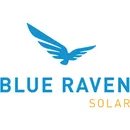Cost of solar panels in Oregon
How much is it to go solar in 2023?

After the federal tax credit, the average cost to install solar panels is $17,290 in Oregon. Going solar in the Beaver State is a little cheaper than the national average, and the cost per watt with solar is also lower compared with other states.
Key insights
- The average cost per watt is $2.60.
- The average payback period is 14 years.
- Over 25 years, the average savings is $15,648.
How much do solar panels cost in Oregon?
Installing residential solar panels can cost between $10,000 to $30,000 or more, though individual costs vary significantly. The average system in Oregon is about 9.5 kilowatts (kW), according to EcoWatch, with a cost of a little more than $17,000 after the 30% federal tax credit.
On the higher end, one solar customer, Gary in Corbett, told us he paid more than $35,000 for a solar system with a backup battery.
Average cost by system size in Oregon
| 7 kW | 8 kW | 9 kW | 10 kW | 11 kW | 12 kW | 13 kW | |
|---|---|---|---|---|---|---|---|
| After federal tax credits | $12,740 | $14,560 | $16,380 | $18,200 | $20,020 | $21,840 | $23,660 |
| Before federal tax credits | $18,200 | $20,800 | $23,400 | $26,000 | $28,600 | $31,200 | $33,800 |
| Approximate roof size | 1,350 sq. ft | 1,500 sq. ft. | 1,650 sq. ft. | 1,800 sq. ft. | 1.950 sq. ft. | 2,100 sq. ft. | 2,250 sq. ft. |
Are solar panels worth it in Oregon?
Solar panels “have an amazing value,” according to Melanie in Beaverton. “You will see your utility drop to either zero or significantly lower.”
Robin in Portland said it took a while to get started (“because I live in a three-story condo, so that required a manlift”). But now, when they generate enough power, their power bill is around $13 a month, although it goes back up in the colder months.
In Oregon, the average lifetime savings with solar is $23,058.
In Oregon — like most states — going solar is worth it for the environmental benefits, according to Karla in Talent.
Karla financed a system in 2021. When we followed up, she said they aren’t exactly “making money” off of the solar investment, but their bills are “pretty much $0 except for a couple of months during the winter, so that’s good.”
“I mean, it'll take 20 years for it to pay itself off, but that wasn't really the goal for us,” she said. “We just liked the idea of being able to use power and not worry about it, not feel like we're doing harm to the planet.”
I feel it is the right thing to do; for the planet, for all of life on the planet, and for [humanity’s] potentially even long-term survival. ”
Not having to worry about energy bills after retirement was a huge part of other people’s decision to go solar too. Nobody knows what energy costs will be like in the future, so getting solar panels now is a good hedge against that.
“I’ve seen older people who don’t use their heat or don’t use their air conditioning because they are afraid of the energy bill at the end of the month,” Karla said. “If we do stay in this house until I’m 90-something, I don’t want to worry about energy bills.”
Plus, Karla expects to get their investment back if they ever decide to sell the house.
“I feel it is the right thing to do; for the planet, for all of life on the planet, and for [humanity’s] potentially even long term survival,” Gary in Sisters told us. “In my opinion … we almost can't afford not to do this.”
Cost factors of going solar in Oregon
Solar costs consist of materials like panels and inverters, permit expenses for compliance, design for optimal sunlight exposure, labor for safe installation, possible grid energy payments when demand exceeds generation and maintenance to ensure peak performance.
How much you actually pay for your solar panels depends on a range of factors, including the size of your system, the quality of your panels and how much sun you can get.
Oregon has an average of three to five hours of peak sunlight a day.
Equipment and labor
Equipment costs include purchasing solar panels, inverters, mounting hardware and other system components. The quality and brand of these components can influence the price. Higher-efficiency panels might be pricier but can produce more electricity in a given space.
In fact, Karla in Talent picked a solar company because of the panels: “I like the panels that SunPower used. They were the high-grade cells.”
Then there’s the cost of hiring professionals to install and set up your solar system. Labor costs will vary based on the complexity of your roof and the company you choose.
» COMPARE: Most efficient solar panels
System size
The total cost is influenced by how big the solar system is — a larger system produces more energy but is more expensive upfront.
Bigger systems take up more roof space. If your roof isn't large enough, consider ground-mounted systems, which can be more expensive due to additional materials and labor.
On the flip side, you might save per unit of energy as the system size increases. This means that the cost per watt or kW might decrease as the system size goes up, making larger systems more cost-effective in terms of production capacity.
With more panels and equipment, there might also be slightly higher maintenance costs over the system's life, though this isn't always directly proportional.
Other cost factors
Depending on where you live, what your house is like and your financial situation, you might also have to take into account local permitting, potential roofing repairs and interest on a solar loan.
- Local permits: Different cities or counties in Oregon have different permitting requirements for solar installations. It's best to check local regulations and fees associated with them. Often, a good solar company does this for you.
- Potential roof repairs: Any required roof repairs or upgrades should be considered before installing solar panels. It will be much more expensive to remove the panels, repair your roof and then reinstall them.
- Financing costs: If you're considering a solar loan or any other financing method, you should factor interest rates and other associated fees into your cost.
» GUIDE: Solar panel installation guide
Solar incentives, tax credits and rebates in Oregon
The federal solar investment tax credit (ITC) is the biggest factor in reducing the cost of going solar in Oregon. If you install a residential solar panel system by the end of 2032, you can deduct 30% of the system's total cost — including equipment, labor and permits — from your federal taxes. The credit drops to 26% in 2033 and 22% in 2034.
In Oregon, the average federal tax credit value is $5,187.
Oregon offers various incentives and rebates to promote solar energy. By using these, you can further reduce the initial investment. Plus, it’s possible to nearly eliminate your power bill with net metering.
» EXPLORE: Oregon solar incentives
Compare solar installation companies in Oregon
It really makes a difference when you shop around, as Jordan in Bonanza found out: “It was cheaper for me by about $20,000 to go with ShopSolar and I can expand the system as I need to.”
Compare popular solar companies available in Oregon below. Read our guide about finding the best solar companies for more.
| SunPower | ShopSolar | Sunrun | Blue Raven Solar | ||||
|---|---|---|---|---|---|---|---|
| Primary | SunPower | Read reviews | Customer Ratings 4.3 | Free quote | Payment options
Cash, loan, lease
| Warranty
10 to 25 years
| |
| Primary |  | ShopSolar | Read reviews | Customer Ratings 4.7 | Free quote | Payment options
Cash, loan
| Warranty
Varies
|
| Primary |  | Sunrun | Read reviews | Customer Ratings 4.1 | Free quote | Payment options
Cash, loan, lease
| Warranty
25 years
|
| Primary |  | Blue Raven Solar | Read reviews | Customer Ratings 4.7 | Free quote | Payment options
Cash, loan
| Warranty
25-year manufacturer warranty, plus a 10-year workmanship warranty
|
FAQ
How much can I save with solar panels?
In Oregon, the average lifetime savings is $23,058 with solar panels (when you pay cash).
How does net metering work in Oregon?
In Oregon, you can benefit from net metering by generating your own electricity with solar panels. Your utility provides a free net meter to track the electricity you consume and produce, and you only pay for the net amount of electricity you use.
If you produce more than you consume, your bill will show just the basic $12 service fee. Any extra energy you produce becomes credits for your future bills, especially handy for less sunny periods like winter.
How many solar panels do I need for my house?
It depends on how much energy you need to generate. The number of solar panels you need depends on how much electricity your household uses. In Oregon, the average monthly energy consumption is 936 kWh. Rounding up to 1,000 kWh, you’d need approximately 20 to 30 panels to generate this in a month.
Is it possible to purchase DIY solar panels?
DIY solar panels are cheaper but not ideal for large residential projects. We suggest hiring a professional to help with installation and permitting. Otherwise, you run the risk of safety issues, roof leaks and other problems.
» EXPLORE: What are grid-tied solar systems?
Are pigeons dangerous for solar panels?
One issue I have is I have a pigeon nesting under the panels,” Robin in Portland said. “I am a little worried about the long-term effect of pigeon poop and pigeon nests.”
Pigeons (and birds in general) do pose some challenges to solar panel installations, but they're not likely to harm your panels. Still, here's how they can be problematic for solar energy systems:
- Nesting: Pigeons, particularly in urban settings, might find the space beneath solar panels a perfect location for nesting. Their nests can accumulate debris and potentially interfere with the electrical systems underneath or the mounting equipment.
- Droppings: Pigeon droppings are quite acidic. Over time, they can also cause hot spots on solar panels that reduce their efficiency by obscuring light.
- Maintenance issues: If pigeons are nesting under solar panels, maintenance checks can become more challenging due to the presence of nests, droppings and the birds themselves. Cleaning the panels might also be needed more frequently.
Installing mesh or netting around the perimeter of the panels can prevent some of these issues. You can also put anti-bird spikes on the edges of solar panels to deter pigeons from landing or nesting. Sometimes, even a simple plastic owl or other decoy can work, though this varies in effectiveness.
» FIND: Best pest control companies
Will my solar panels work on cloudy days?
Solar panels still produce energy on cloudy days, just not as much. Some light from the sun reaches the panels, but it's not as strong or bright as on clear days.
Solar panels capture light from the sun and turn it into electricity. On bright days, they work well because there's a lot of sunlight. But on overcast days, when there are clouds in the sky, the sunlight gets dimmer. It's like wearing sunglasses: You can still see, but everything is a little darker.
How can I pay for solar panels?
You can pay cash, but most people finance solar panels. A solar loan works a lot like any other type of loan — there’s an application and approval process, and you pay it back over time (with interest). If you are considering a solar loan, lease or PPA (power purchase agreement), always ask:
- Is there a down payment?
- How much will I pay per month?
- When will monthly payments increase, and by how much?
Bottom line
Oregon is already one of the greenest states in the U.S., thanks to its renewable energy generation, low carbon emissions and waste generation per capita, and percentage of waste that is recycled or composted.
Purchasing panels is a significant upfront investment for most people, however. On the bright side, the cost to go solar in Oregon has fallen 54% over the last 10 years, according to the Solar Energy Industries Association (SEIA), and will likely continue to go down.
Solar costs: Oregon vs. nearby states
| Initial cost* | ITC value (30%) | Average cost per watt | Payback period* | 25-year savings | |
|---|---|---|---|---|---|
| Oregon | $17,290 | $5,187 | $2.60 | 14 years | $15,648 |
| Washington | $26,900 | $8,070 | $2.69 | 16 years | $10,846 |
| Idaho | $18,200 | $5,460 | $2.60 | 14 years | $11,478 |
| California | $16,380 | $4,914 | $2.73 | 8 years | $30,000 |
» STILL NOT SURE? Solar energy pros and cons
Article sources
- Federal Financial Institutions Examination Council, “ HMDA Data Publication .” Accessed July 6, 2022.
- EcoWatch, “ Solar Panel Cost in Oregon .” Accessed Aug. 7, 2023.
- Office of Energy Efficiency & Renewable Energy, “ Homeowner’s Guide to the Federal Tax Credit for Solar Photovoltaics .” Accessed Aug. 7, 2023.
- Solar Energy Industries Association, “ Solar State By State .” Accessed Aug. 7, 2023.
- Solar Energy Industries Association, “ Oregon Solar .” Accessed Aug. 7, 2023.
- Database of State Incentives for Renewables & Efficiency (DSIRE), “ Oregon Programs .” Accessed Aug. 8, 2023.
- Energy Information Administration, “ Average Monthly Bill-Residential .” Accessed Aug. 8, 2023.
- Energy Trust of Oregon, “ Solar for Your Home .” Accessed Aug. 8, 2023.
- Energy Trust of Oregon, “ Net Metering .” Accessed Aug. 8, 2023.
You’re signed up
We’ll start sending you the news you need delivered straight to you. We value your privacy. Unsubscribe easily.
